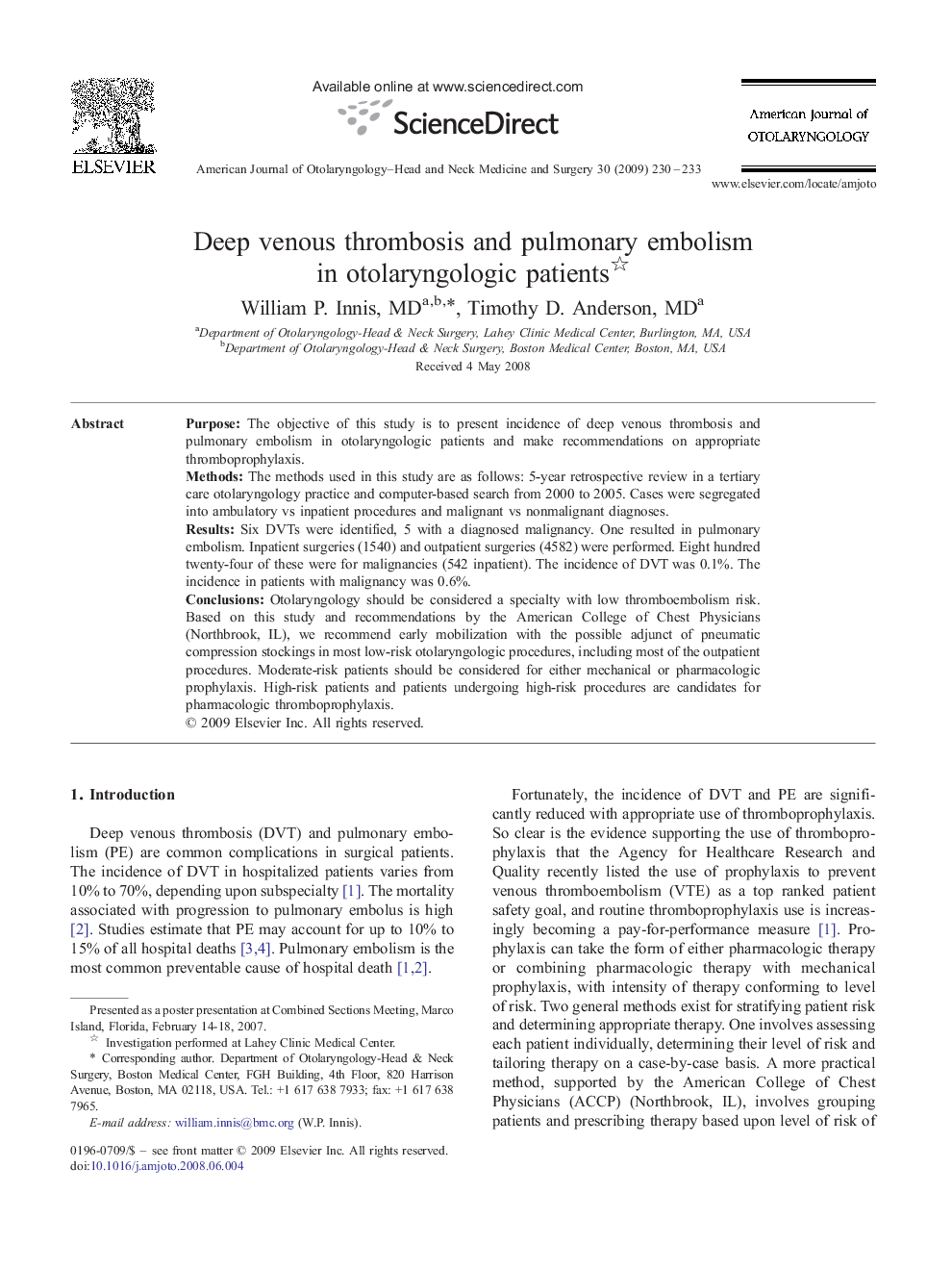| Article ID | Journal | Published Year | Pages | File Type |
|---|---|---|---|---|
| 4104225 | American Journal of Otolaryngology | 2009 | 4 Pages |
PurposeThe objective of this study is to present incidence of deep venous thrombosis and pulmonary embolism in otolaryngologic patients and make recommendations on appropriate thromboprophylaxis.MethodsThe methods used in this study are as follows: 5-year retrospective review in a tertiary care otolaryngology practice and computer-based search from 2000 to 2005. Cases were segregated into ambulatory vs inpatient procedures and malignant vs nonmalignant diagnoses.ResultsSix DVTs were identified, 5 with a diagnosed malignancy. One resulted in pulmonary embolism. Inpatient surgeries (1540) and outpatient surgeries (4582) were performed. Eight hundred twenty-four of these were for malignancies (542 inpatient). The incidence of DVT was 0.1%. The incidence in patients with malignancy was 0.6%.ConclusionsOtolaryngology should be considered a specialty with low thromboembolism risk. Based on this study and recommendations by the American College of Chest Physicians (Northbrook, IL), we recommend early mobilization with the possible adjunct of pneumatic compression stockings in most low-risk otolaryngologic procedures, including most of the outpatient procedures. Moderate-risk patients should be considered for either mechanical or pharmacologic prophylaxis. High-risk patients and patients undergoing high-risk procedures are candidates for pharmacologic thromboprophylaxis.
